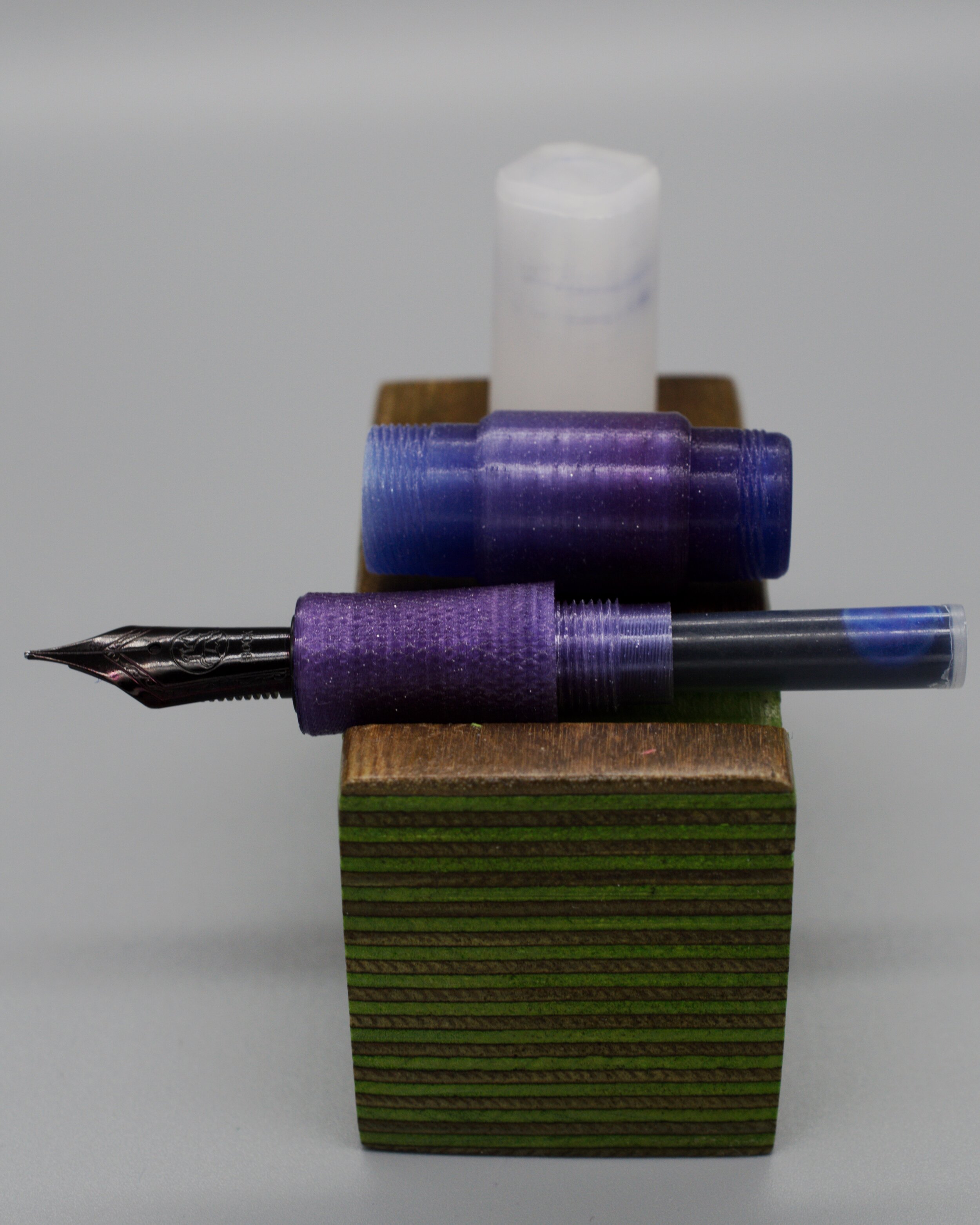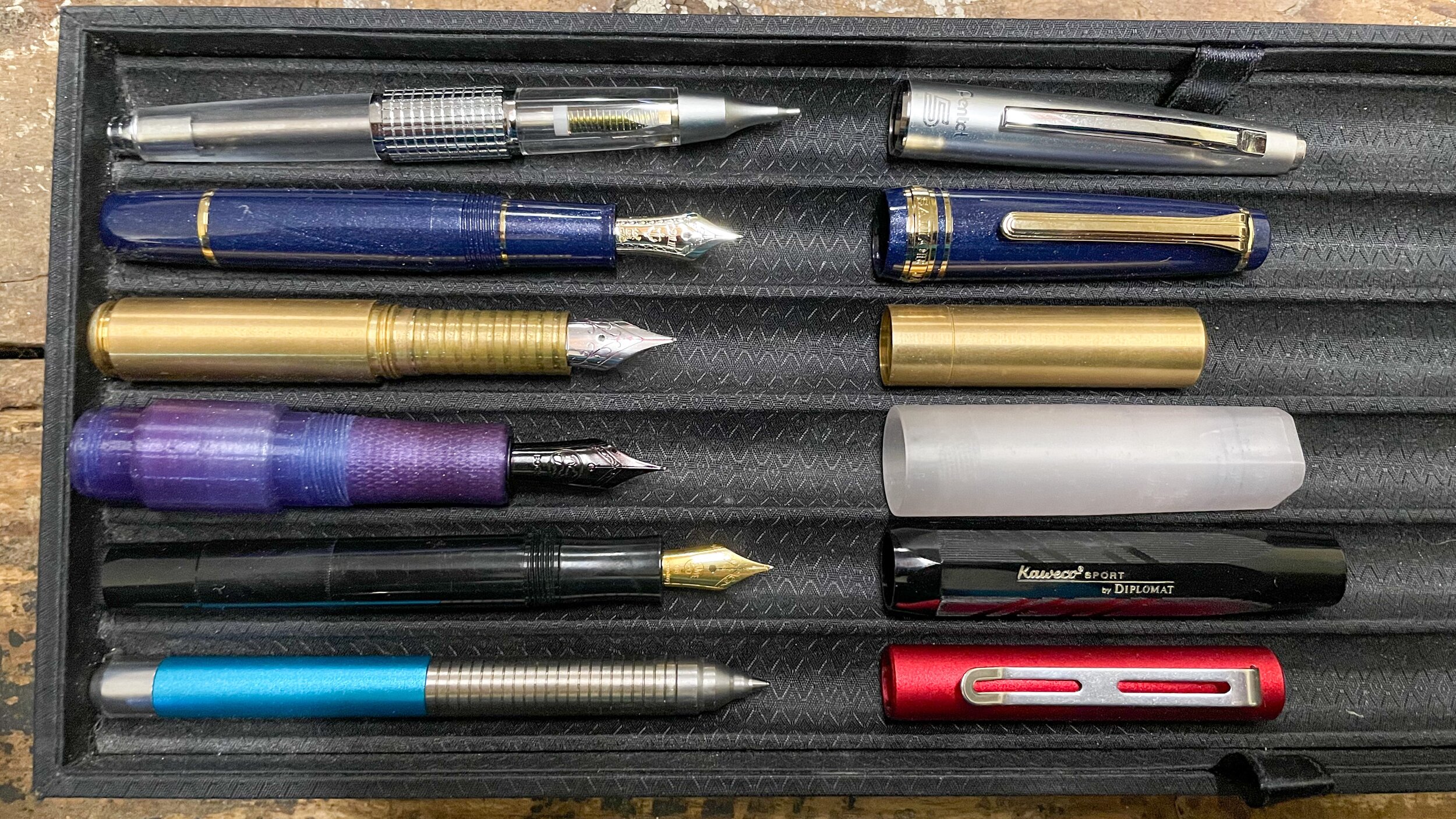Pocketable Practicality: The 3D Printed Pocket Pen from Practical Pens
I love when my pen friends turn me on to new brands and makers. I don’t remember when I first heard of Practical Pens, but I know it was some time last year that some one posted an Instagram link on the Pen Addict Slack group. I took a look at the pens pictured on the profile and I figured that before long I’d have to buy one. A few months later, Daniel (the man behind the pens) posted some pictures of a pocket pen model he had designed, and I knew that was the pen for me.
As pen makers go, Practical Pens is pretty new to the scene. Having started making pens during the pandemic, Daniel hasn’t had the opportunity yet to bring his pens out to a pen show and get reactions from a bunch of pen geeks sitting around a table. That hasn’t stopped him from iterating and improving on his design, though. My initial order for this pen was delayed when he decided he needed to redesign and reprint the pen cap to increase clearance between the cap and nib. Because Daniel is producing his pens via 3D printing (fused filament fabrication, to be precise) he is essentially already benefitting, at this early stage of pen making, from some of the computer numerical control (“CNC”) advantages that other seasoned pen makers work their way up to with more expensive equipment. There is essentially no version of a 3D printer that isn’t CNC, unlike traditional wood or metal lathes used in pen turning where you don’t find the CNC features until you reach the pricier models.
The pen arrives in the above packing sleeve, also 3D printed specifically to fit this pen. I wasn’t expecting it, and it was a very nice touch that set the tone from the beginning that Daniel is paying attention to detail as he makes these pens. The printed plastic sleeve keeps the pen safe in transit, and is useful for storing the pen as well. While it held up to me pocket carrying the pen using it as a case for a couple of days around my house, I would be hesitant to use it long-term in this matter. The plastic walls of the sleeve are much thinner than those of the pen, and I could see it potentially cracking if the right (or wrong) pressure was applied. Not a knock against it, though, because it wasn’t designed for that anyway.
Once you pop the plastic sleeve open, you are greeted with a great little piece of engineering. The barrel of this pen is designed to be as short as it can get away with, so that length can be added instead in the section. This section is the same section that Daniel has used for full sized pens in the past, so there is no compromise for length or girth here as you get in many other pocket pens. The four-faceted cap has some significant length to it as well, so that it can fully cover the nib and section, and this also makes the pen reasonably long when posted. Thanks to that length, it is very comfortable to write with. The cap is a single piece with no inner sleeve, but it is shaped to be a little bit tighter around the nib, constricting airflow when capped and helping to prevent the pen from drying out too quickly. I opted for a black lacquered Bock 250 nib, because Daniel happened to have it in stock when I was ordering, but these pens can be made to fit #6 nib housings for both Bock and Jowo. Yet another benefit of 3D printing, that changing components like in this manner only requires measurements, not new tooling.
This pen really impresses when you compare it to other pocket pens. Below I’ve laid it out next to a Pentel Sharp Kerry mechanical pencil, a Sailor Professional Gear Slim Mini, a Schon DSGN Pocket 6, a Kaweco Sport, and a Spoke Roady. All of these writing implements are designed to be compact, and designed to be posted in order to be written with. I’m a fan of pocket pens, and the ones in these pictures are some of my favorites. What we can see here is that the Practical Pens pocket pen is the shortest of the bunch when capped, just barely shorter than the Schon Pocket 6. This isn’t a surprise as both of these two pens were designed specifically to be as short as possible capped, while incorporating a short international cartridge and a #6 nib. The cap of the 3D pen is fairly long in its own right, but not as long as that of the Kaweco Sport, although the Practical Pen screws to post so the barrel doesn’t sit as deeply in the pen as the Kaweco does when posted. Speaking of posted length, the Sailor just slightly beats out the Practical pocket pen, and the Schon P6 is just slightly shorter. The Practical Pen has a wider grip section than either of those, however, so if that’s a concern for you that is worth considering.
When it comes to actually writing with the pen, it performs just about how you would expect. Which is to say, Practical Pens isn’t making filing systems (yet) or grinding nibs, they are designing a shell made of polylactic acid (“PLA”) that fits a standard international cartridge and a standard #6 nib from your choice of two brands. Because it is designed well, it will write like the nib you put in it, and like the ink cartridge you choose for it. And that’s a good thing, because it means you can buy this pen and put your favorite nib in it. You can use your favorite brand of cartridges, or even refill empty cartridges with ink from a bottle. The PLA material of the pen is fairly light (PLA filament is generally sold by the kilogram, so 3D printing makers have an incentive to make their products light because it means they can get more out of their roll of filament.) The section, as I mentioned above, is long and thick, and in my hand that feels great. The cap threads blend into the texture on the section, so even if you hold your pen very far back you won’t feel them. There’s a bit of a step from the threads to the barrel, but it is rounded in a way that makes it unobtrusive. The thickness of the section in particular is something I really like about this pen. Writing with it feels like writing with an oversized pen, even though it is actually very compact. This pen really proved to be everything I hoped it would from the first time I saw it.
"So where's the catch?" I hear you asking. Well, there's no catch per se, but there's also no retail storefront currently carrying Practical Pens. No vendors, and no personal ecommerce page from the maker. If you're interested in buying one of these pens, your only option for now is to send a direct message to Daniel via his Instagram page. That's really not so much of an ask, but I know not everyone has Instagram or is super comfortable using it, so for some that may be a bit of work to get around. Still, I recommend checking out Daniel's Instagram page, even if you aren't entirely sure you want to buy anything, just because he has some really awesome looking materials from companies like Proto Pasta and Filablend, and they are a whole lot of fun even just to look at. Also, keep in mind that Daniel prices his pens without a nib. As I mentioned before, he can make them to fit either Bock or Jowo, so if you have a spare nib sitting around you can have the pen made for it and save a little bit of money. When Daniel has nibs in stock (which is not always) you can pay a little bit extra, like I did, to have a nib shipped with your pen. I'm avoiding listing prices here, because I don't know if the prices may vary a bit depending on the particular materials used (I've learned recently how much variance there is in PLA cost) but the price I paid for this pen was incredibly reasonable, as have been all of the other prices I've seen Daniel listing on his Instagram page. Go check his page out for more details.
This pen was purchased at retail price from Practical Pens










